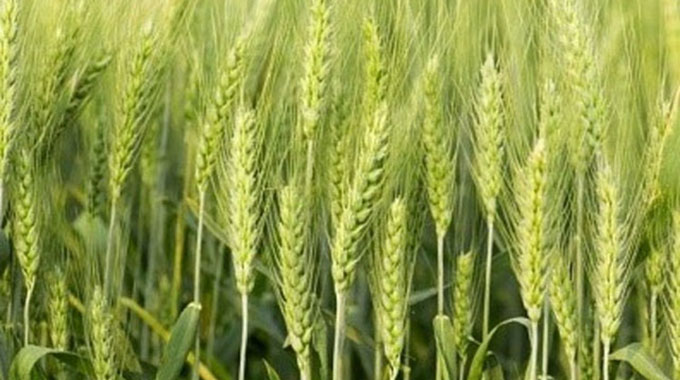
Precious Manomano
Herald Reporter
Farmers have been encouraged to start planting winter wheat this month and take advantage of the moisture available across all provinces as the rainy season comes to an end.
A total of 85 000 hectares have been targeted for winter wheat this year and this is expected to produce 408 000 tonnes of the cereal, well above the 375 000 tonnes realised last year which was the record harvest since wheat started being grown commercially in the country in 1966. That harvest was also the first ever that met all Zimbabwe’s wheat needs, now of 360 000 tonnes, with no imports required.
Agricultural experts have advised farmers to plant in time with the optimum planting dates being set for the last week of April in Lowveld areas, to the end of May in higher altitude areas.
However, the highest yields are obtained when planting is done within the first two weeks of May.
Planting on time enables farmers to avoid frost during critical growth stages of wheat like flowering and to avoid high disease and pest pressure during the months of August and September when the crop is in the post-anthesis stage — when the grain is filling.
Early planting also allows the tillering stage to coincide with low temperatures during the month of June. Low temperatures and even frost at this stage promote tillering.
Farmers are expected to follow good agronomic practises to enhance productivity.
Some farmers have completed land preparation and tilling while others are currently in preparation of winter wheat planting.
Zimbabwe Commercial Farmers’ Union (ZCFU) president, Dr Shadreck Makombe said the country was ready to produce a record harvest following the good rains that have replenished all irrigation dams.
Dr Makombe advised farmers to plant as early as they received the green light for their area from the expert advisors to minimise any clash between their harvesting and the start of the next rainy season.
“Yes, most people do it around 15th of May but l urge farmers from other areas to plant early, even small portions. Time is very crucial because late planted wheat was seriously affected by rains. Farmers should secure inputs on time as well to ensure that we produce more this season. Yes, a bumper harvest is predicted since we have good rains this season for the production of the crop,” he said.
Zimbabwe Indigenous Women Farmers Association Trust president Mrs Depinah Nkomo said farmers were geared to do winter wheat farming, adding that a good harvest was predicted.
She said if the Grain Marketing Board facilitated payments to maize farmers on time, wheat production would be easily managed, as farmers could then continually recycle their capital.
“Inputs are needed and that is why I am saying if GMB pays maize farmers on time so we can fully engage in wheat production. We also intend to increase wheat hectarage this season. We have enough water for irrigation. We are aiming higher than last season,” she said.
This year wheat inputs are financed through private contractors, Government’s National Enhanced Agricultural Productivity Scheme (NEAPS), Presidential wheat support scheme and self-financed growers. All farmers are expected to average around 4,8 tonnes to the hectare.
CBZ Agro-Yield is targeting at contracting 20 000ha for 96 000 tonnes; AFC Land Bank is targeting at contracting 15 000ha for 72 000 tonnes; the private sector and self -financed farmers will go for 25 0000ha for 120 000 tonnes; and the Presidential scheme targets 20 000ha for wheat for 96 000 tonnes.
The 2023/24 summer and the 2023 winter season programme target is to sustainably increase crop production and productivity to meet and surpass the national requirements for both human consumption and industrial use.
Government has been targeting increases in wheat production to ensure Zimbabwe moves in self-sufficiency in line with the Agriculture and Food Systems Transformation Strategy, the Agriculture Recovery Plan and the National Development Strategy 1 and in pursuit of the vision of becoming an empowered and prosperous upper middle income society by 2030.
In 2008 the wheat subsector had declined but with the advent of new dispensation, there was transformation in agriculture.
Last season private sector participation played a pivotal role in the success of wheat production.